The Plym Valley Railway is a 1 1⁄2-mile (2.4 km) heritage railway based on part of the now-closed South Devon and Tavistock Railway, a branch line of the Great Western Railway in Devon, England.
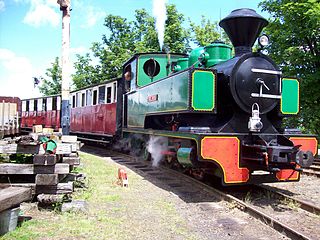
The Sittingbourne & Kemsley Light Railway in Kent is a 2 ft 6 in narrow gauge heritage railway that operates from Sittingbourne to the banks of The Swale.

Andrew Barclay Sons & Co. is a builder of steam and later fireless and diesel locomotives. The company's history dates to foundation of an engineering workshop in 1840 in Kilmarnock, Scotland.

Sentinel Waggon Works Ltd was a British company based in Shrewsbury, Shropshire that made steam-powered lorries, railway locomotives, and later, diesel engined lorries, buses and locomotives.

W. G. Bagnall was a locomotive manufacturer from Stafford, England which was founded in 1875 and operated until it was taken over in 1962 by English Electric.
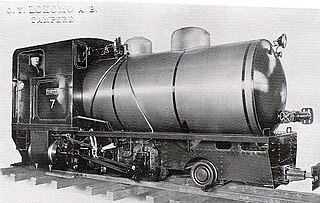
A fireless locomotive is a type of locomotive which uses reciprocating engines powered from a reservoir of compressed air or steam, which is filled at intervals from an external source. They offer advantages over conventional steam locomotives of lower cost per unit, cleanliness, and decreased risk from fire or boiler explosion; these are counterbalanced by the need for a source to refill the locomotive, and by the limited range afforded by the reservoir.

Locomotives of New Zealand is a complete list of all locomotive classes that operate or have operated in New Zealand's railway network. It does not include locomotives used on bush tramways.

The Great Whipsnade Railway, also known as The Jumbo Express, is an English, 2 ft 6 in narrow gauge heritage railway that operates within ZSL Whipsnade Zoo in Bedfordshire, England.

No. 19 - aka is a preserved 0-4-0 saddle tank locomotive, built by W.G. Bagnall in 1950. It was the final steam locomotive to work in the HM Devonport Dockyard, and is currently owned by the Cornish Steam Locomotive Preservation Society.
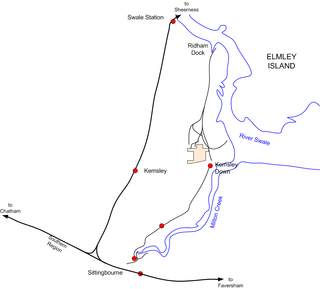
The Bowaters Paper Railway was a 2 ft 6 in narrow gauge industrial railway running from Sittingbourne to Ridham Dock on The Swale in the county of Kent. It had the distinction of being the last steam-operated industrial narrow gauge railway in Britain when it closed in 1969. Part of the system still operates as the Sittingbourne & Kemsley Light Railway.

F. C. Hibberd & Co Ltd was a British locomotive-building company founded in 1927 to build industrial petrol and diesel locomotives. In 1932 the company acquired the goodwill of James and Frederick Howard Ltd. and the company moved to Park Royal, London, and began manufacturing locomotives there.
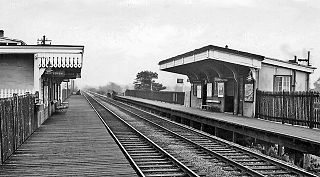
Blaby railway station was a railway station on the Birmingham to Peterborough Line that served Blaby in Leicestershire, England.
Tube-gauge steam locomotives may appear to be an unlikely possibility, because of the problems of using such a machine in the confines of a tunnel less than 12-foot (3.7 m) in diameter, but the London Underground had three such vehicles over the years. Two were built by the Hunslet Engine Company in 1899, and the third by Kerr, Stuart and Company in 1922.

Monarch is a narrow gauge steam locomotive, built by W.G. Bagnall Ltd., Stafford in 1953. It is currently on public display at the Welshpool and Llanfair Light Railway. It is the last industrial narrow gauge locomotive to be built for commercial use in the UK and is constructed to a modified Meyer articulated design. It is the last of seven locomotives built to a similar design, the other six being built to 2 ft gauge and delivered to sugar estates in South Africa.

The W. G. Bagnall New Standard 18 0-6-0ST is a type of industrial steam locomotive manufactured at W. G. Bagnall's Castle Engine Works and designed by Harold Wood at W.G. Bagnall in 1951. The class was specifically designed for the Port Talbot Steelworks, and ran from 1951 to 1973 in industrial service. Two locomotives, the former Longbridge locomotives, are preserved.
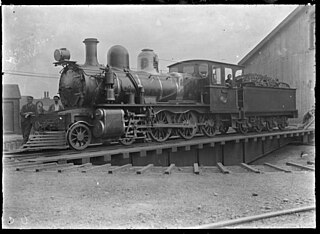
The NZR UC class were a group of ten 4-6-0 steam locomotives obtained from Scottish builders Sharp, Stewart and Company for New Zealand Railways (NZR). Essentially they were developments of the firm's previous batch of 4-6-0s' for NZR.
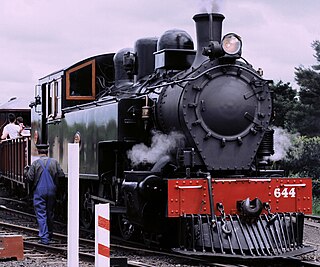
The New Zealand WW class was a class of 4-6-4T tank locomotives that operated on the New Zealand national railway network. They were built for New Zealand Railways Department (NZR) the final development of the six-coupled tank engine in New Zealand, the penultimate class of tank locomotives to be built for NZR, and the first class of tank locomotives to be built with superheaters.

Kemsley Paper Mill is a paper mill located in the village of Kemsley near Sittingbourne in the English county of Kent.


















